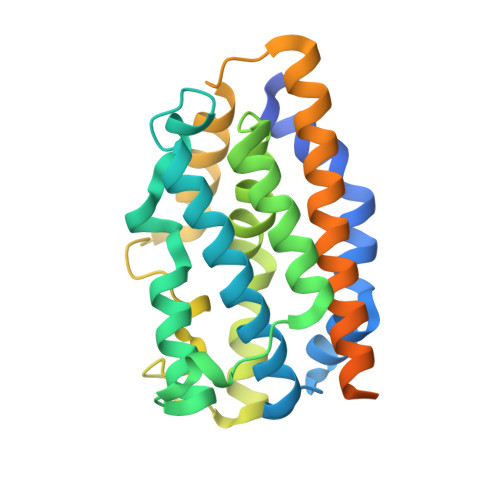Alternative cyanide-binding modes to the haem iron in haem oxygenase
Sugishima, M., Oda, K., Ogura, T., Sakamoto, H., Noguchi, M., Fukuyama, K.(2007) Acta Crystallogr Sect F Struct Biol Cryst Commun 63: 471-474
- PubMed: 17554165
- DOI: https://doi.org/10.1107/S174430910702475X
- Primary Citation of Related Structures:
2E7E - PubMed Abstract:
Cyanide is a well known potent inhibitor of haem proteins, including haem oxygenase (HO). Generally, cyanide coordinates to the ferric haem iron with a linear binding geometry; the Fe-C-N angle ranges from 160 to 180 degrees . The Fe-C-N angle observed in the crystal structure of haem-HO bound to cyanide prepared at alkaline pH was 166 degrees . Here, it is reported that cyanide can bind to the haem iron in HO in a bent mode when the ternary complex is prepared at neutral pH; a crystal structure showed that the Fe-C-N angle was bent by 47 degrees . Unlike the ternary complex prepared at alkaline pH, in which the haem group, including the proximal ligand and the distal helix, was displaced upon cyanide binding, the positions of the haem group and the distal helix in the complex prepared at neutral pH were nearly identical to those in haem-HO. Cyanide that was bound to haem-HO with a bent geometry was readily photodissociated, whereas that bound with a linear geometry was not photodissociated. Thus, alternative cyanide-binding modes with linear and bent geometries exist in the crystalline state of haem-HO.
Organizational Affiliation:
Department of Medical Biochemistry, Kurume University School of Medicine, Japan.
















